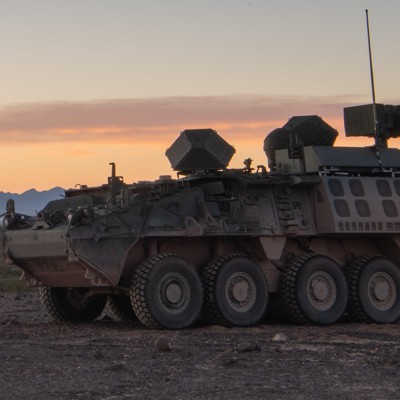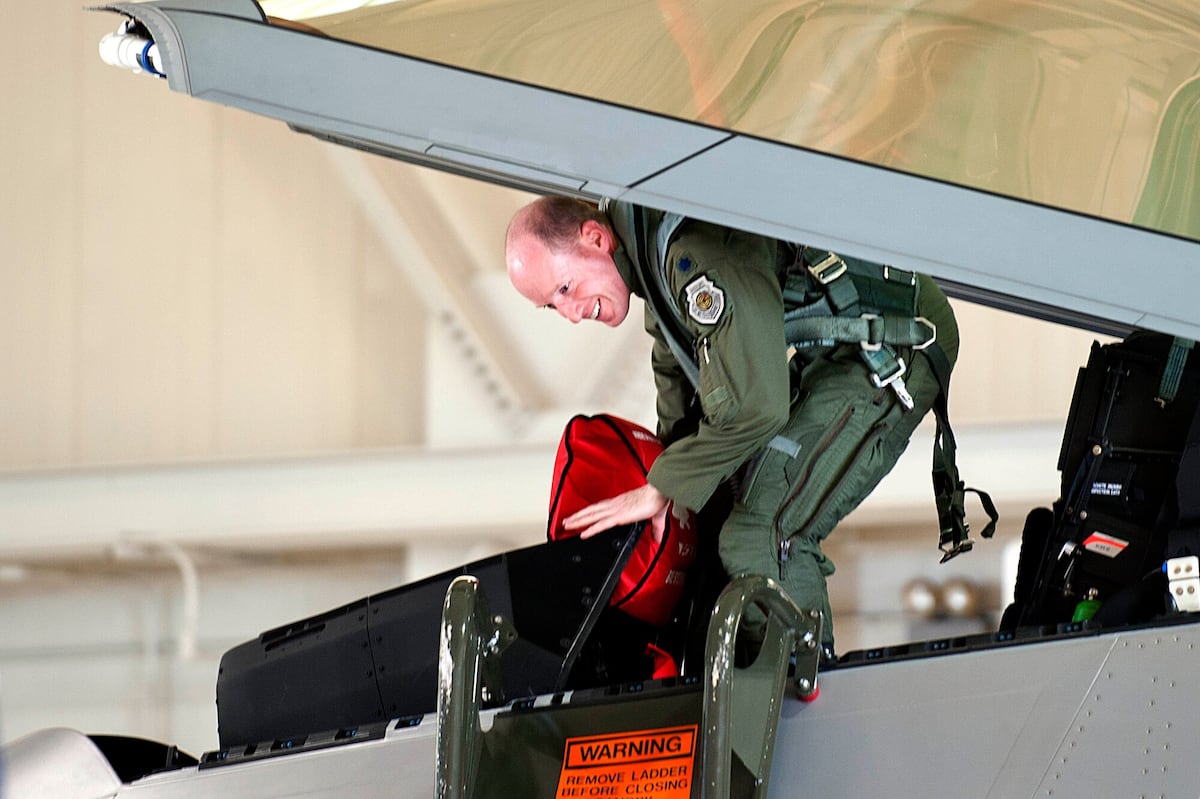HUNTSVILLE, Ala—The Army will pick the winner of its first production contract for high-energy, vehicle-mounted air-defense lasers next year, a milestone in the Pentagon’s decades-long pursuit of practical directed-energy weapons. But their wide adoption will depend on whether commanders and troops can be convinced to forgo today’s interceptor missiles and other options, according to the Army’s critical-technologies chief.
In recent years, the Army’s Rapid Capabilities and Critical Technologies Office has developed 17 prototype systems that use directed energy to down incoming drones, rockets, and missiles. Several of these, including 50-kilowatt Raytheon lasers mounted on Stryker vehicles, were sent for testing in the Middle East. The results gave Army leaders the confidence to ask in their 2026 budget for about $679 million for a production order to outfit 44 Strykers.
The Army will choose a builder in next year’s contest, which is explicitly open not just to Raytheon but others as well, RCCTO director Lt. Gen. Robert Rasch said Tuesday.
Rasch said the real judge of a laser’s value on the battlefield will be whether “that young private or that young specialist who’s sitting behind the console” can use them as part of a “tiered defense” that also includes “next-generation interceptors, Coyote interceptors, Stinger missiles.”
The challenges are the same they’ve always been: range and power. The closer to the ground (or sea), the more particulate matter in the air, the dirtier the air, the less directed energy hitting the target. The result: even high-energy lasers are more effective when they are closer to the target, which is not a place people like to be.
Last summer at Fort Sill, Oklahoma, soldiers tested 50-kilowatt lasers and small missiles against incoming threats. The tests revealed the biggest obstacle to rapid deployment: soldiers prefer more proven options over lasers, Rasch said.
“We have to give that soldier the confidence” to rely on directed energy, even if it means allowing the drone or missile to get closer before taking the shot, Rasch said.
To win next year’s contract, he said, laser makers must provide reliability, which will encourage troops to use the system, and maintainability that doesn’t need pristine, particle-free clean rooms for repairs.
Despite the obstacles, Rasch said directed-energy efforts have the full support of Army leaders. That’s created new incentives to find creative solutions to directed-energy shortcomings. He suggested that unmanned ground vehicles could help integrate laser air-defense into formations, and he highlighted robotic work underway at Fort Belvoir and Aberdeen Proving Ground.
“What if I put a laser on a robot and sit it forward” toward the front line, he said. “Without having to invest a gajillion dollars in getting another three kilometers with lasers, put it on a platform where I can send [it] out to the front, keep our soldier safe, to help reduce that range.”
Read the full article here








Leave a Reply